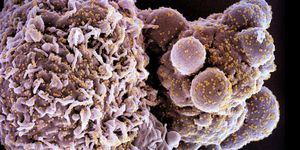New 10-Point Scale Predicts Death from Social Frailty
Social isolation, living in a neighborhood with poor cleanliness, and lower perceived control over financial situations can predict early death in those aged 65 years and older. The corresponding study was published in PNAS.
Studies show that social factors can predict health outcomes. For example, loneliness is linked to higher rates of functional decline and death, and social network strength correlates with lower rates of cognitive decline.
Currently, inventories that assess the impact of social risk on health are very large. While also effective, their size often makes them impractical to implement in research settings. A shorter inventory with reasonable accuracy could make social risk factor assessments easier to implement in research settings.
In the current study, researchers created the ‘social frailty index’, a 10-question inventory that assesses mortality risk from social risk factors. To do so, they analyzed data from 8, 250 adults aged 65 years and older. Within four years of their first interview, 22% of the cohort had died.
Using machine learning prediction methods, the researchers identified 183 possible social predictors of death within four years, which were then reduced to eight:
- poor neighborhood cleanliness
- low perceived control over financial situation
- meeting with children less than once per year
- not working for pay
- not active with children
- not volunteering
- feeling isolated
- being treated with less courtesy or respect
Alongside these eight social factors, the researchers included questions on age and gender in the inventory. They then validated it with data from the 2012 Psychosocial and Lifestyle Questionnaire. Results from the new Social Frailty Index highly correlated with observed mortality rates from the 2012 data: the inventory predicted a four-year mortality rate of 4.4% in the lowest decile, whereas the observed rate was 7.3%. It also predicted a 62.2% 4-year mortality rate in the highest decile, whereas the observed score was 59.9%.
The researchers wrote that their model had a 76% accuracy when applied to the data used to develop it, and 73% accuracy in the 2012 validation cohort. They further noted that the model could predict 74% of nursing home stays, and 64% of hospitalizations.
While promising results, the researchers cautioned that their findings have some limitations. They noted that the risk factors in the index are not necessarily causal and that addressing them will not necessarily reduce mortality risk. They wrote that randomized trials would be needed to determine any causal nature among the factors.
The researchers hope that their findings will have applications in clinical, population health, and research settings. To this end, they are currently working to validate their findings through additional studies. In the meantime, the Social Frailty Index is available for free for use by researchers, clinicians, and the public.
Sources: Neuroscience News, PNAS









